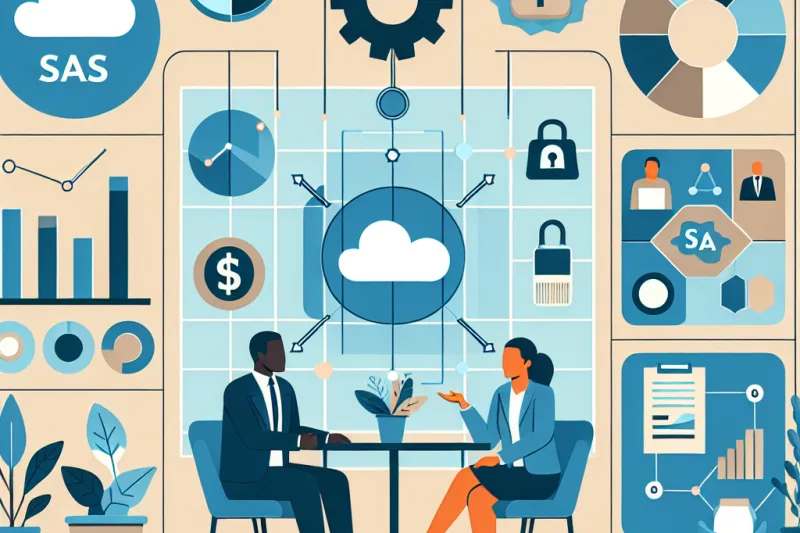Key Indicators of Market Trends and Customer Needs Relevant to Your SaaS Product
In today’s hyper-competitive SaaS landscape, staying ahead isn’t just about building a great product—it’s about anticipating where the market is heading and what your customers will need next. As Jason Lemkin, founder of SaaStr, often says, “The best SaaS companies are the ones that listen hardest to their customers—and act fastest.”
Drawing from research at elite MBA programs like Harvard Business School and Wharton, insights from SaaS leaders like David Skok and Aaron Levie, and data from McKinsey, SaaS Capital, and PitchBook, this article will walk you through the key indicators you should monitor to stay strategically aligned with market trends and evolving customer needs.
Tracking Innovation and Emerging Technologies
Innovation is the lifeblood of SaaS growth. According to Stanford’s research on innovation metrics, companies that systematically track innovation KPIs outperform peers by 30% in ARR growth.
Key Innovation KPIs to Monitor:
- Feature Adoption Rate: Measures how quickly and widely new features are embraced. Low adoption signals misalignment with customer needs.
- Net Promoter Score (NPS) for New Features: A targeted NPS survey post-launch can reveal if innovations are truly valued.
- Time-to-Value (TTV): How quickly users realize value from new features. Shorter TTV correlates with higher retention and upsell rates.
Emerging technologies like AI-driven personalization, low-code/no-code platforms, and cybersecurity enhancements are reshaping SaaS. As explored in emerging technologies and market trends, monitoring these shifts is critical to future-proofing your product roadmap.
Optimizing Customer Acquisition and Retention
Understanding customer needs isn’t just about surveys—it’s about behavior. McKinsey’s 2023 SaaS report highlights that companies using behavioral analytics to personalize customer journeys see a 15–20% boost in conversion rates.
Customer-Centric Metrics to Track:
- Customer Lifetime Value (CLTV) to Customer Acquisition Cost (CAC) Ratio: A healthy SaaS business typically targets a 3:1 ratio. If it dips, it’s a red flag that your value proposition needs refinement.
- Churn Rate by Cohort: Analyzing churn by signup date or customer segment reveals hidden product-market fit issues.
- Product Usage Frequency: Daily or weekly active usage trends are leading indicators of retention and upsell potential.
For deeper strategies on optimizing your funnel, see optimizing marketing and sales funnels.
Assessing Acquisition Viability and Strategic Growth
In SaaS, inorganic growth through acquisitions is increasingly common. Wharton’s M&A frameworks emphasize that strategic fit, cultural alignment, and financial health are the three pillars of acquisition success.
Acquisition Readiness Indicators:
- Revenue Synergies: Can the target’s customer base cross-sell into your existing offerings?
- Technology Compatibility: How easily can the target’s tech stack integrate with yours?
- EBITDA Margins: As noted in EBITDA multiples trends, higher margins often command better acquisition premiums.
Advisors like iMerge use proprietary valuation models to assess acquisition viability, helping SaaS CEOs avoid costly missteps.
Financial Forecasting and Regulatory Compliance
Financial discipline is non-negotiable. SaaS Capital’s 2023 survey found that companies with accurate 12-month rolling forecasts grew 20% faster than those without.
Financial Metrics to Watch:
- Rule of 40: Growth rate + profit margin should exceed 40%. It’s a key benchmark for investors and acquirers.
- Deferred Revenue Trends: A growing deferred revenue balance signals strong future cash flows.
- Burn Multiple: How much you’re spending to generate each dollar of net new ARR. A burn multiple under 1.5x is considered healthy.
On the compliance front, evolving data privacy laws (GDPR, CCPA) and AI regulations are reshaping SaaS operations. Preparing for these shifts is critical, as discussed in SaaS regulatory compliance.
Fostering Employee Engagement and Innovation Culture
Finally, your internal team is your ultimate competitive advantage. Research from Harvard Business Review shows that companies with high employee engagement outperform peers by 21% in profitability.
Internal Health Indicators:
- Employee Net Promoter Score (eNPS): Measures team satisfaction and loyalty.
- Innovation Pipeline Health: Track the number of new ideas submitted, piloted, and launched each quarter.
- Leadership Bench Strength: Identify and develop future leaders to sustain growth.
For actionable strategies, explore building a culture of innovation.
Conclusion: Turning Insights into Action
Monitoring these indicators isn’t just an academic exercise—it’s about building a SaaS company that’s resilient, adaptable, and primed for growth. By systematically tracking innovation KPIs, customer behavior, acquisition opportunities, financial health, and internal engagement, you’ll position your company to not just survive but thrive in the evolving SaaS landscape.
Scaling fast or planning an exit? iMerge’s SaaS expertise can guide your next move—reach out today.



